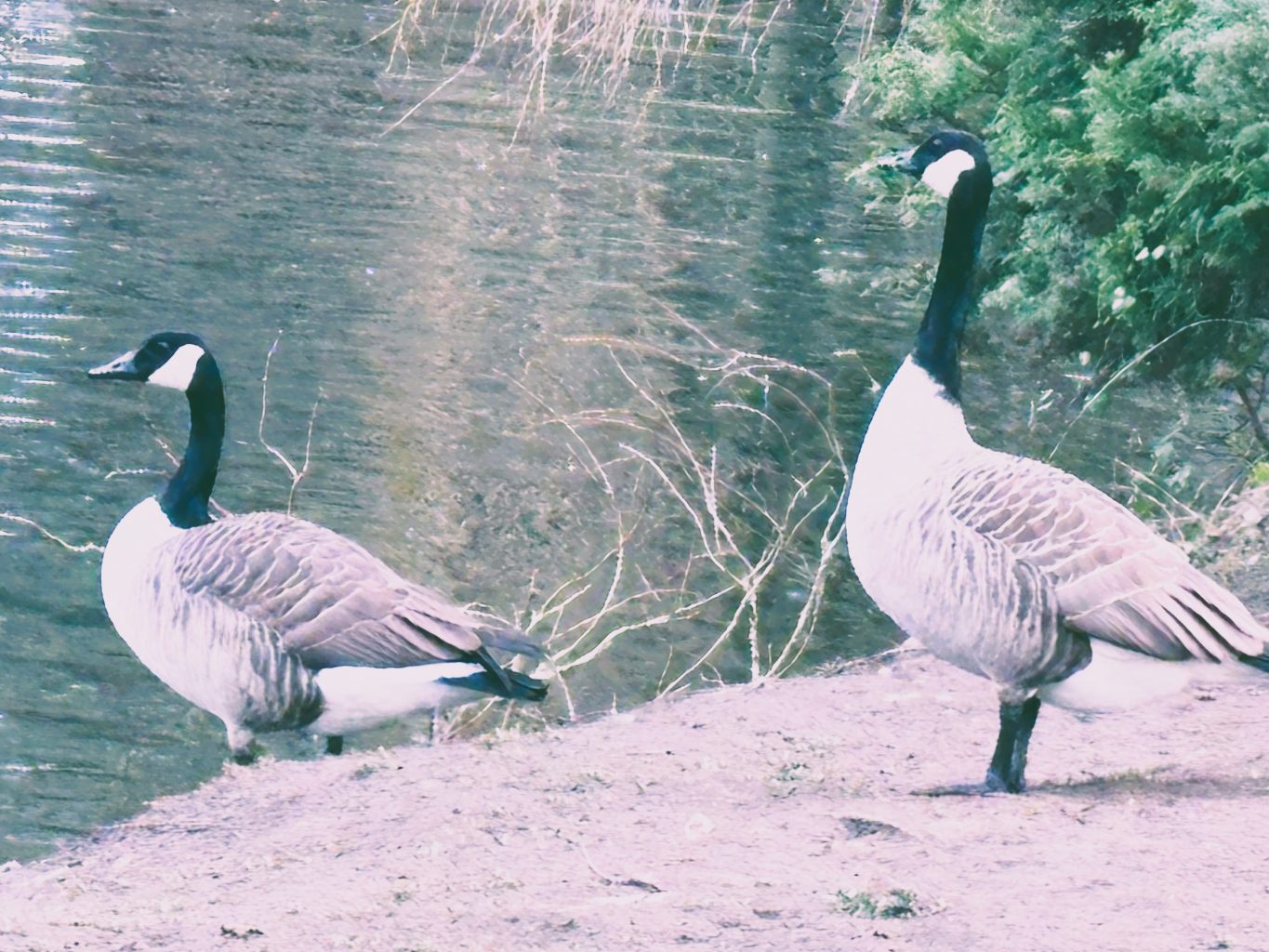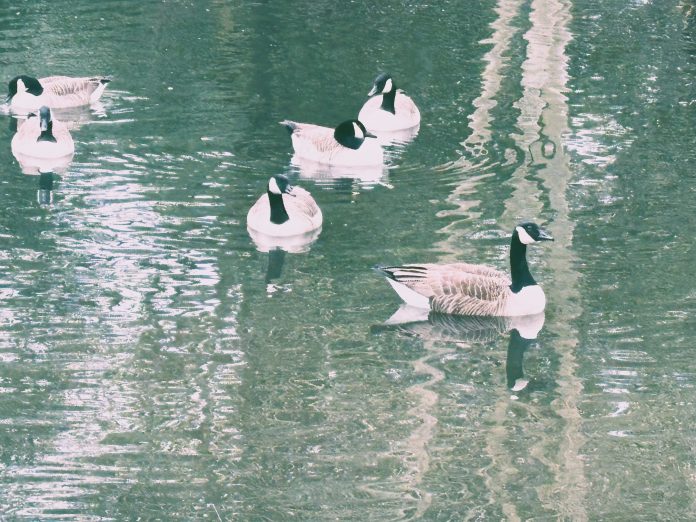If you’ve ever watched a flock of Canada geese flying overhead in autumn, you might have assumed they were making their long journey from across the Atlantic. But here’s the surprising truth—the Canada geese in the UK don’t actually come from Canada at all!
So, Where Did They Come From?
Canada geese (Branta canadensis) were introduced to the UK in the 17th century as ornamental birds for parks and estates. With no natural predators and plenty of suitable habitat, their population grew rapidly. Today, they are found across the country all year round, with an estimated 190,000 birds in the UK. Unlike their North American relatives, which migrate thousands of miles between Canada and the southern US, UK Canada geese are completely non-migratory.
Why Do They Seem to Appear and Disappear?
Even though they don’t migrate across continents, Canada geese in the UK still move around seasonally, which can make it seem like they’re coming and going:
- Spring (March–June) – Nesting and Breeding
During this time, geese stay close to their nesting sites—often in parks, golf courses, or lakesides. They are highly territorial and can be aggressive if disturbed. - Summer (June–August) – Moulting and Gathering
In early summer, adult geese moult, meaning they shed their flight feathers and become temporarily flightless. To stay safe, they gather in large groups near water, where they are less vulnerable to predators. - Autumn (September–November) – Flocking and Moving to Feeding Grounds
Once their feathers grow back, geese regain their ability to fly and begin moving around in search of food. This is when you might see large V-shaped flocks overhead, making it easy to mistake their local movements for long-distance migration. - Winter (December–February) – Large Flocks on Farmland and Lakes
As food sources change, geese congregate in huge numbers on lakes, reservoirs, and fields, where they graze on leftover crops. Their numbers seem to increase dramatically in some areas, giving the impression that they have just arrived from abroad.
So, while they may look and behave like migratory birds, UK Canada geese are actually just shifting between feeding and roosting sites within Britain.
The Problems with Canada Geese in the UK
While Canada geese are an impressive sight, they have become a serious nuisance in many areas. Their large population and feeding habits can cause significant problems for gardeners, parks, and nature reserves.
1. They Destroy Lawns and Plants
Canada geese are heavy grazers, and large flocks can strip grass down to bare soil, leaving muddy, damaged ground behind. They also trample flower beds, damage crops, and pull up young plants in search of food.
2. Their Droppings Are Everywhere
A single Canada goose can produce up to 2 kg of droppings per day! These quickly turn lawns, pathways, and patios into a slippery, smelly mess. Not only is this unpleasant, but their droppings can also carry bacteria, making it a hygiene concern in public parks and gardens.
3. They Can Be Aggressive
During the breeding season, Canada geese become highly territorial. They will hiss, flap their wings, and even chase humans or pets if they feel their nest is threatened. This can make them a real problem for gardeners and park visitors.
4. They Pollute Waterways
Geese droppings in ponds and lakes lead to nutrient pollution, which encourages algal blooms. This depletes oxygen levels in the water, harming fish and other aquatic life.
5. Their Population Keeps Growing
With few natural predators in the UK, Canada geese continue to thrive. They can live for up to 25 years, and each pair produces 4–6 goslings per year. Once a group establishes itself in an area, they are very difficult to remove.

How to Deter Canada Geese from Your Garden
If Canada geese are invading your garden or local park, here are some ways to keep them away:
✅ Reduce Open Lawn Areas – Geese prefer short grass. Letting your lawn grow longer or planting dense flower beds can make it less attractive.
✅ Use Barriers Near Water – Fencing, hedging, or dense planting along the edges of ponds can prevent geese from waddling onto land.
✅ Try Scare Tactics – Predator decoys, reflective objects, and noise deterrents (like motion-activated sprinklers) can work—but they need to be moved regularly to stay effective.
✅ Stop Feeding Them – Feeding geese encourages them to stay and increases their numbers. Educate others not to feed them in public spaces.
✅ Egg Control – In some cases, preventing geese from breeding by treating or removing eggs is allowed under a special license from Natural England.
Final Thoughts
It may be surprising to learn that Canada geese in the UK never actually fly in from Canada, but their seasonal movements can certainly make it seem that way! While they are a striking and familiar sight in parks and gardens, their growing numbers have led to real challenges for landowners and gardeners. By making simple changes to our landscapes and using deterrents, we can help manage their impact while still appreciating these fascinating birds from a distance.
Have you had problems with Canada geese in your garden? Let us know in the comments!





